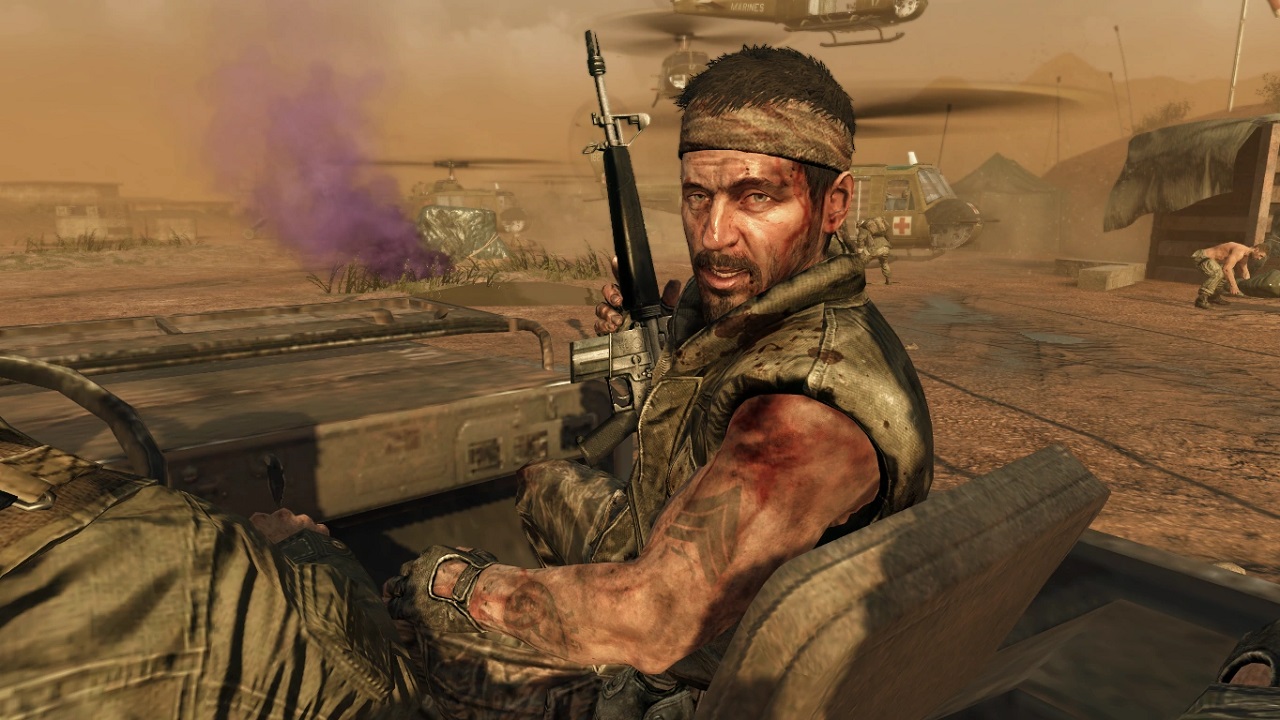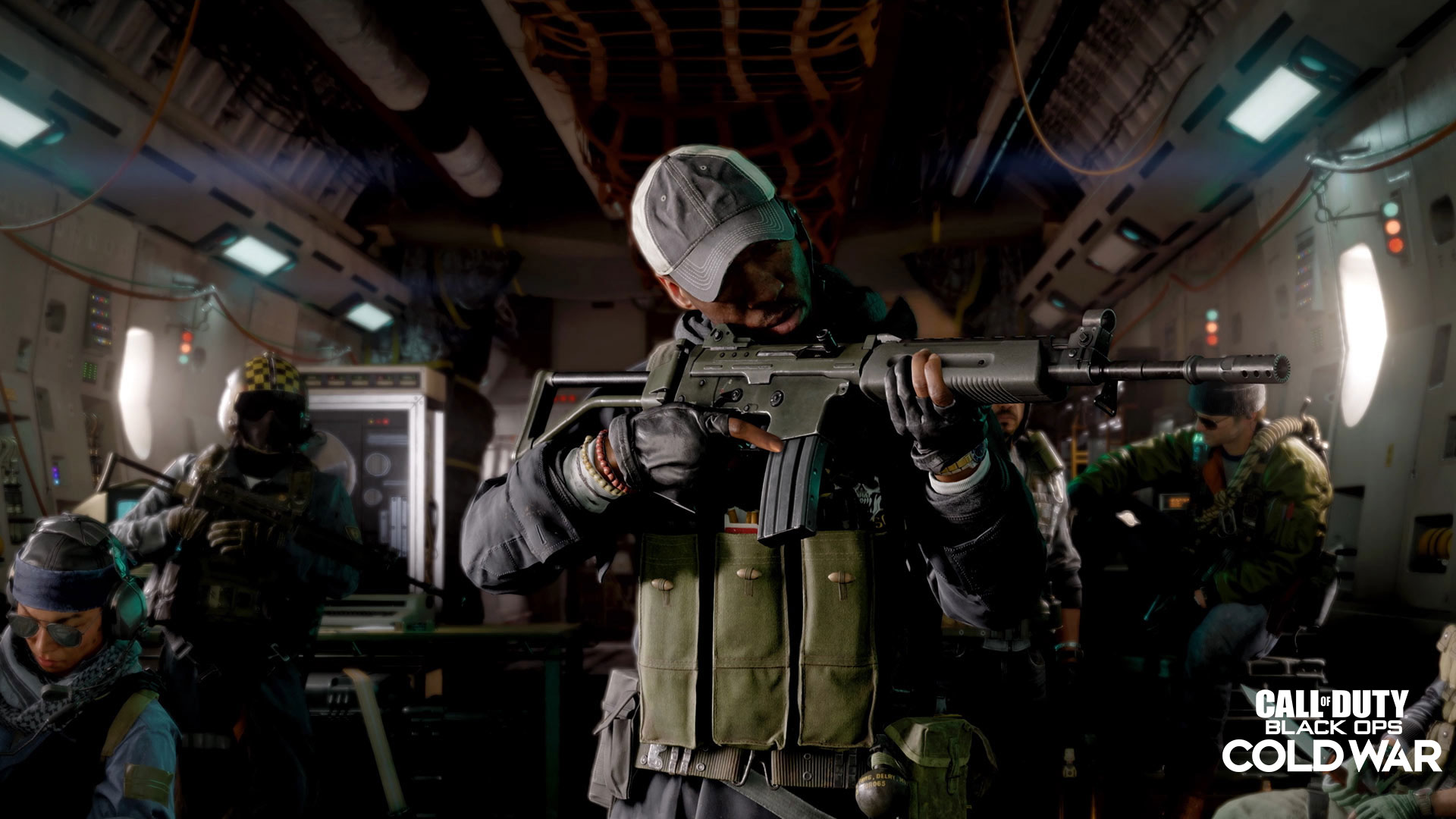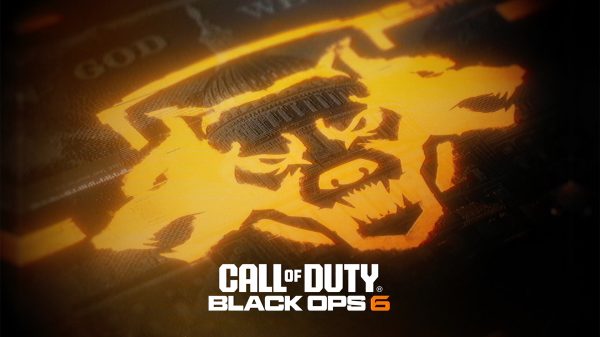Call of Duty is like one of those Danish shortbread biscuit tins; sometimes you open it up and it’s full of delicious biscuits, the exact same delicious biscuits they were last time you opened Schrodinger’s cookie tin. Familiar. Tasty. Sometimes though, it’s jam packed with disappointment in the form of sewing stuff, and you just want to yeet it out the window. Since Modern Warfare 3 I’ve been an avid fan of Call of Duty’s multiplayer, hanging out for each yearly iteration around. But I’m no spring chicken, and though I consider myself ever so slightly slicker than average, I’m not the sweaty Dew and Dorito-slamming trash talker I once was. Last year’s Modern Warfare was the first time I felt like perhaps the sun was setting on my illustrious career as an amateur Call of Duty player. Try as I might I could not get the hang of it. Had age wearied me? Was I so out touch? Turns out that no, it’s the children who were wrong, because after playing the alpha for Call of Duty: Black Ops Cold War over the weekend I can safely say I’m back. Many will claim that COD doesn’t change much from year to year, but there are some key design elements that work so well in Cold War, that they highlight just why Modern Warfare is such a dumpster fire. Let’s compare…
Map Design
Modern Warfare tried to shake up the three-lane map design any COD fan will be familiar with, but in the words of Angry Joe, they done fucked it up. Levels were a cluttered mess of intersecting lines of sight that had the paranoia dialled to eleven. I’m all for map memorisation, but there were just too many windows, doorways, alley ways and hidey holes built into busy maps with zero logical flow. What is was supposed to do was add an element of realism, what it did was encourage camping, as moving was simply too great a risk. Don’t get me started on those sprawling 10v10 maps either, they were just…terrible.
In the core playlist comprising TDM, Domination, Kill Confirmed and Hardpoint there were three maps, and they were a complete palette cleanser compared to last year’s offering. There was the three-lane ethos at work and a nice amount of environmental detail to give them life without feeling like you’re shooting people while scrambling around the haunted rubbish dump from Round the Twist. Their familiar design gave them comprehensive flow, and it was easy to judge spawns and find targets. Satellite was a standout, with lots of long, clear lines of site mixed up with a risk versus reward elevated position dead in the middle of the map and some tight cave sections. Every time I ventured into Satellite’s dunes on the flank I knew there would be at least one sniper waiting, but so excellent was the design of the section that you could easily break a line of sight by ducking into a small valley and then pop up at an unpredictable spot. There is no greater feeling than taking down the subspecies of human known as snipers with clever assault rifle gameplay (a shotgun’s good too though), and I felt like common sense manoeuvring in the maps allowed me to create my advantages. I’d argue that the city of Miami needs to invest in some street lamps (that map is bloody dark), but I’d play that map on repeat over just about anything Modern Warfare had to offer.

Frank Woods: “Sit down, kids. Let me tell you about chaining a Reaper into an AC-130.”
The Time to Kill is much longer, health bars are glorious
Feeding into the paranoia of Modern Warfare’s you-pitch-a-tent-and-I’ll-bring-the-marshmallows campfest map design, the time to kill felt very short. This meant you had to slow everything down, because if you misjudged a situation and let the enemy get the drop on you, you had femtoseconds to react. Cold War brings back a much longer TTK (similar to Black Ops 4), and at the same time brings back health bars. Hand in hand with the more comprehensible map design, longer TTKs means that battlefield positioning, reaction time and gun skill all count – if you unexpectedly cop some stray bullets you’ve got the ability to react, reposition and retaliate. Health bars also give you an idea of how close you are to downing an enemy and whether your bullets are behaving themselves, which is just another great level of visual feedback to help you assess your performance.
Eliminations over Kills encourages team play
Call of Duty players aren’t known for their ability to play nice with others, and very often it can feel like the perception is that objectives are optional as long as your kill/death ratio is healthy. But just like Black Ops 4, Cold War brings back eliminations rather than kills. In this way, anyone who has laid some damage on someone will score the elimination as long as they’re still alive, meaning kill stealing is non-existent, and watching your team mate’s back actually has a tangible advantage. Objective play is also richly and equally rewarded meaning you’ll have better quality matches. I normally flock to TDM, but I actually found the objective modes much more interesting because of how they focused the firefights and allowed some legitimate strategy and satisfying plays.
Additionally, getting an elimination for partial kills means your elimination/death ratio should generally be higher than the classic kill/death ratio, which fosters a feeling of accessibility and may help weaker players feel they’re contributing to the battle in a meaningful way and keep them engaged. I do hope they track both stats, and I’d also like to see global stats (not just the last ten game average) for both as well.
Combined Arms replaces Ground War
Ground War was the 32v32 shitshow in Modern Warfare that mimicked the idea of Battlefield’s large-scale Conquest mode but had absolutely zero percent of its nuance or balance. It was fun for a brief moment, but there’s only so many times you can stomach seeing ten snipers and a tank just sitting on a cliff. The 12v12 Combined Arms mode strikes a much better balance, managing to borrow enough from Battlefield, but still maintain its identity as a Call of Duty mode. There are larger levels (whose compact design I quite liked) with a few vehicles to get around and hold down points, and while it may be a sniper’s paradise, it at least makes sense as a Call of Duty experience.
Scorestreak shakeup
This one is more of a general change than anything specifically mishandled by Modern Warfare, but I like the way scorestreaks are handled in Cold War. Rather than having your scorestreak reset on death, it’s your cumulative points that count towards earning things like artillery strikes and attack choppers. To balance it out, elimination scores gain a bonus multiplier each time you get one without dying, meaning if you want that chopper gunner you’re still going to have to have a decent kill/death ratio. Objectives, of course, also count towards scorestreaks, as does taking down spy planes, which incentivises both aggressive kills and smart objective play. The Call of Duty franchise has always struggled to find that perfect balance with killstreaks/scorestreaks, and this may well be the best blend of accessible versus rewarding we’ve seen yet.
You’ll probably realise that I haven’t mentioned Warzone, and that’s because I tried to get in as much time with the other modes as possible over a busy weekend. I’ll be getting right into all the modes for my review in November, but at the moment Treyarch and Raven Software’s Cold War is shaping up to be a classic, pared back Call of Duty experience that’s rekindling a fire that Modern Warfare tried to throw a bucket of sand on.
Kieran is a consummate troll and outspoken detractor of the Uncharted series. He once fought a bear in the Alaskan wilderness while on a spirit quest and has a PhD in organic synthetic chemistry XBL: Shadow0fTheDog PSN: H8_Kill_Destroy































